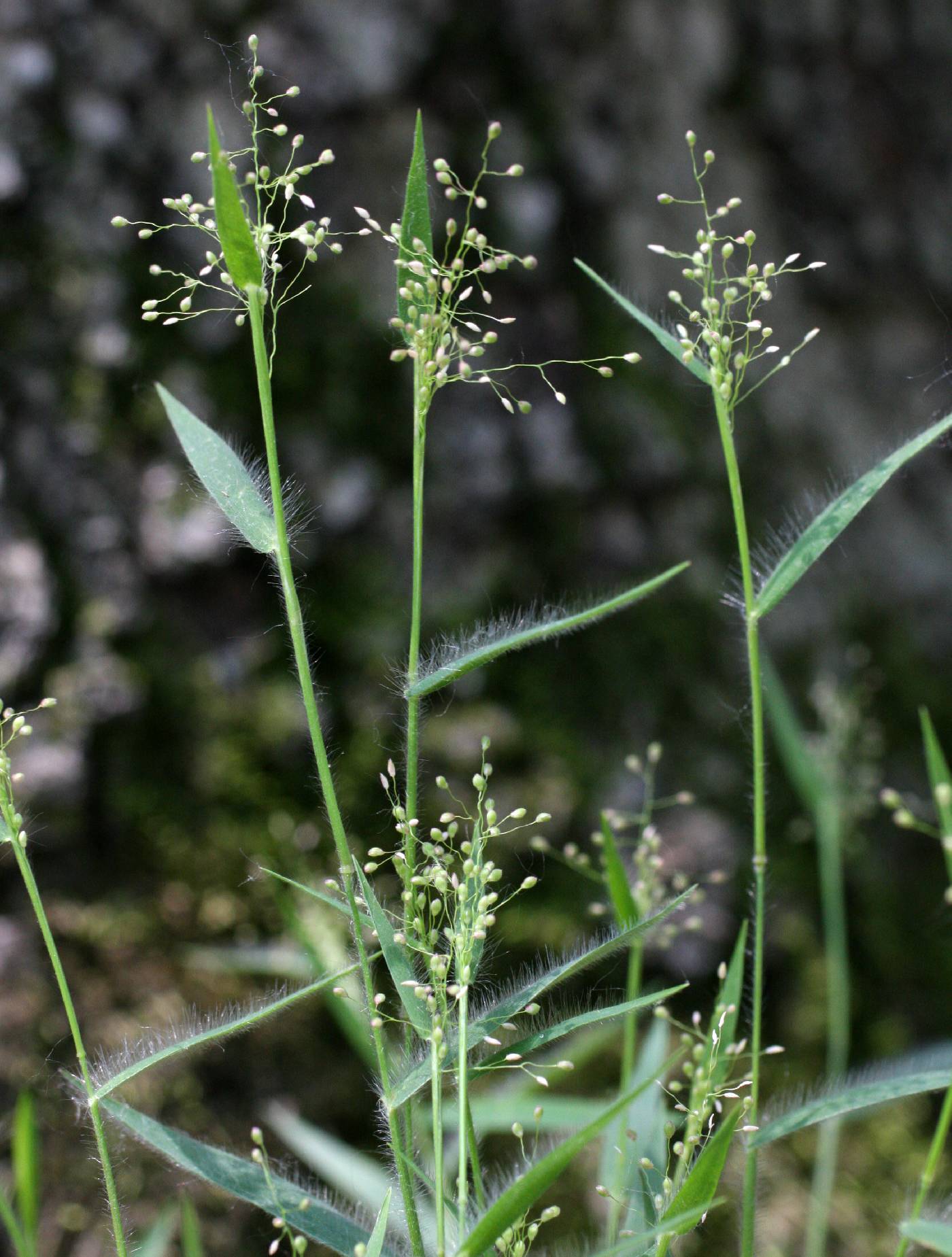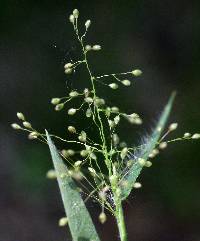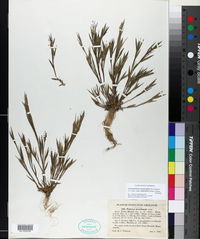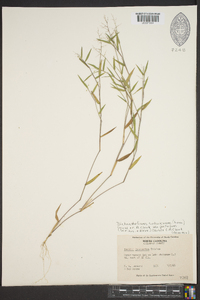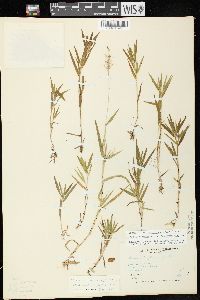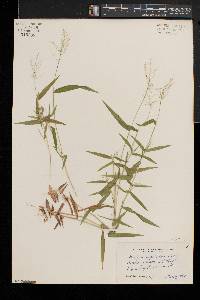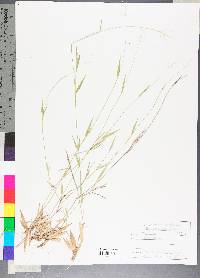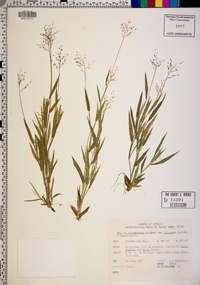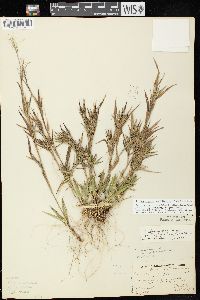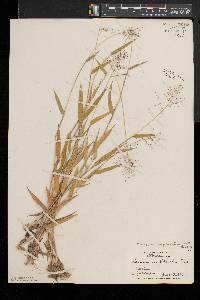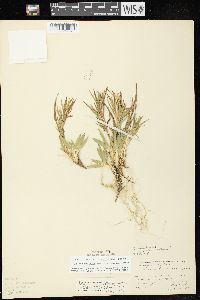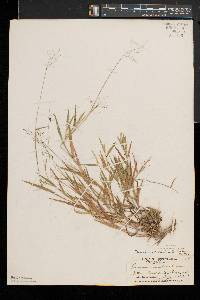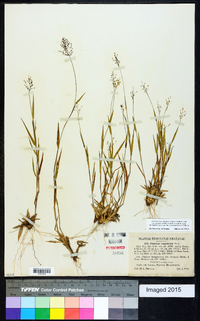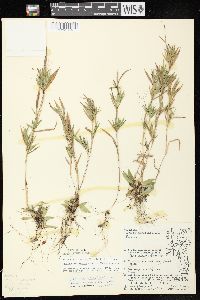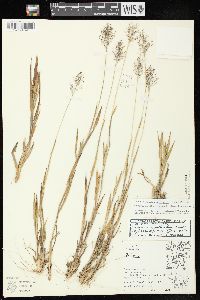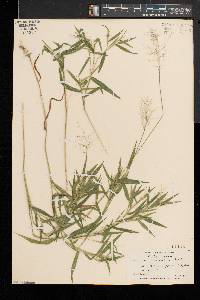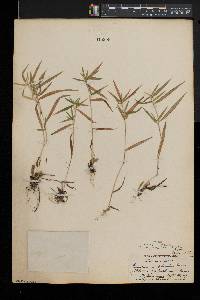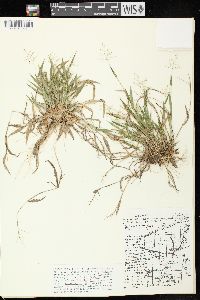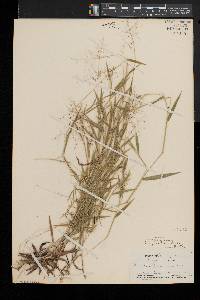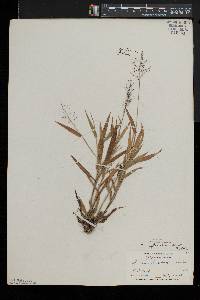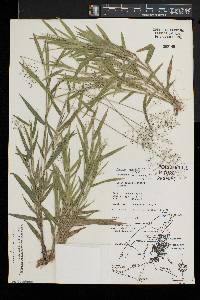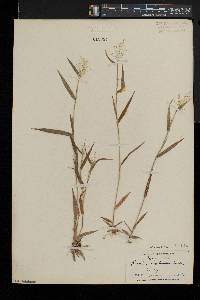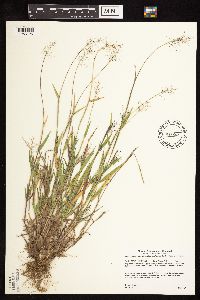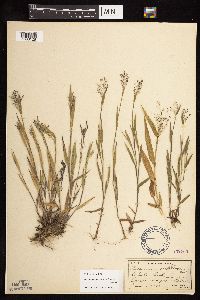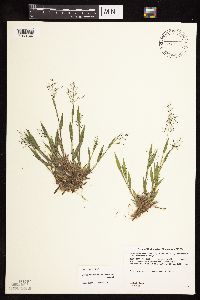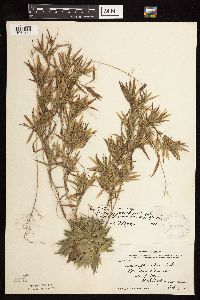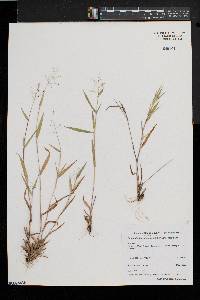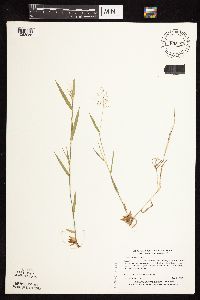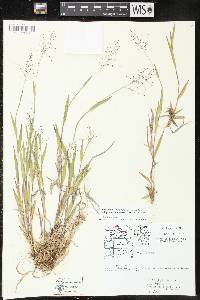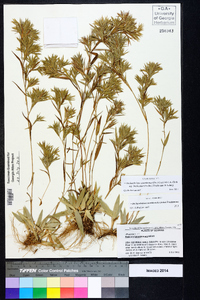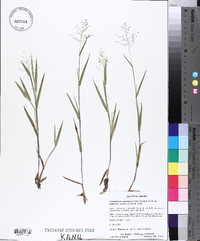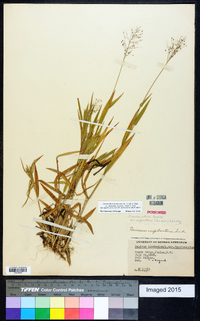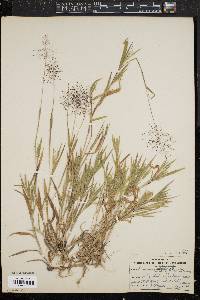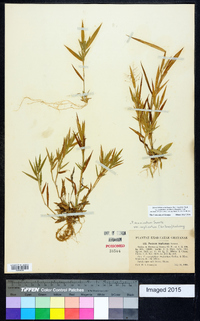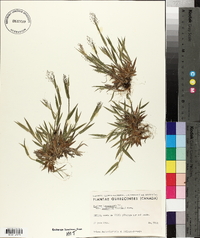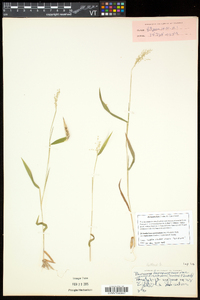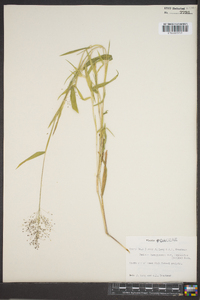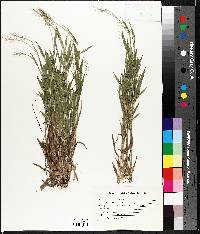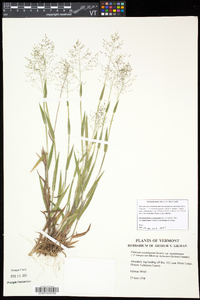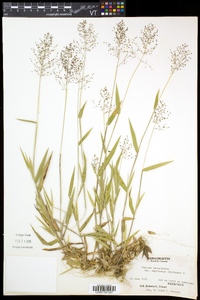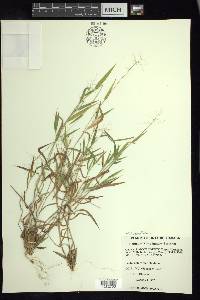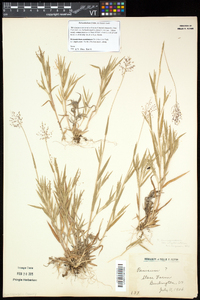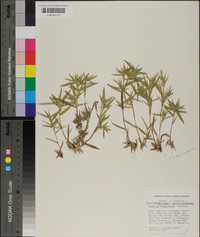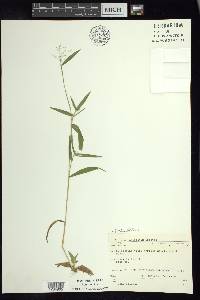
|
|
|
|
Family: Poaceae
Common Witch Grass
[Dichanthelium acuminatum var. implicatum (Scribn.) Gould & C.A. Clark, moreDichanthelium sabulorum var. patulum (Scribn. & Merr.) Gould & C.A. Clark, Panicum acuminatum var. implicatum (Scribn.) C.F. Reed, Panicum columbianum var. oricola Fernald, Panicum columbianum var. siccanum (Hitchc. & Chase) B. Boivin, Panicum heterophyllum Bosc ex Nees, Panicum implicatum Scribn., Panicum lanuginosum var. implicatum (Scribn.) Fern., Panicum occidentale Scribn., Panicum oricola Hitchc. & Chase, Panicum pacificum A.S. Hitchc. & Chase] |
Plants densely cespitose. Culms seldom over50 cm, slender, suberect, ascending or spreading; nodes more or less densely pubescent; fall phase branching extensively from the lower and midculm nodes, with conspicuous, flabellate fascicles of branches and reduced blades. Cauline sheaths shorter than the internodes, lower sheaths usually pilose with papillose-based hairs, upper sheaths often short-pubescent; midculm sheaths about 1/2 as long as the internodes; blades usually 2-6 mm wide, more than 8 times longer than wide, relatively firm, erect to ascending, often yellowish-green, abaxial surfaces densely pubescent with short papillose-based hairs or short-pubescent with subappressed hairs, adaxial surfaces more or less densely pilose, hairs to 6 mm, conspicuous, erect or ascending, occasionally with shorter hairs underneath. Spikelets 1.3-1.6 mm, usually broadly obovoid. Dichanthelium acuminatum subsp. implicatum usually grows in low, moist areas, including open woodlands, meadows, bogs, and cedar and hemlock swamps, and also in drier, sandy areas. Its range extends from south central Canada to the midwestern and northeastern United States. It intergrades occasionally with the more widespread subsp. fasciculatum. Perennial herb, densely tufted 15 cm - 0.5 m tall Inflorescence: a terminal, branched arrangement of spikelets (panicle). Primary panicles atop the culms, often open, rather dense, 3 - 12 cm long, one-fourth to three-fourths as wide as long, well-exserted. Secondary panicles (when present) atop the branches. Fruit: a caryopsis, indehiscent, enclosed within the persistent lemma and palea. Culm: nearly upright or ascending or spreading, 15 cm - 0.5 m long, slender, round in cross-section, hollow. Nodes sometimes swollen, more or less densely hairy. Fall phase much-branched from the lower and mid-culm nodes, forming fan-shaped clusters of branches and reduced leaf blades. Spikelets: 1 - 1.5 mm long, broadly reverse egg-shaped with a blunt to nearly pointed apex, variously hairy. Basal leaves: in a rosette. Blades shortly egg-shaped to lance-shaped, distinct from stem blades. Stem leaves: four to seven, alternate, two-ranked. Sheaths shorter than internodes (about half as long at mid-culm), softly hairy with bumpy-based hairs (lower sheaths) or shortly hairy (upper sheaths). Ligules and pseudoligules 1 - 5 mm long, composed of hairs. Blades relatively firm, upright to ascending, distinctly longer and narrower than basal leaves, 2 - 6 mm wide, over eight times longer than wide, lance-shaped with a rounded or almost heart-shaped base, parallel-veined, densely hairy with short bumpy-based hairs or shortly hairy with nearly appressed hairs beneath, more or less densely soft-hairy above (hairs to 6 mm long), often with a marginal fringe of bumpy-based hairs (at least basally). Glumes:: Lower glumes usually one-fourth to one-half as long as spikelets, blunt to pointed at the apex. Upper glumes rounded to pointed at the apex. Lemmas:: Lower lemmas similar to upper glumes. Upper lemmas longitudinally lined, shiny, with rolled-up margins above. Paleas:: Lower paleas shorter than lower lemmas, thin. Upper paleas longitudinally lined. Florets:: Lower florets sterile. Upper florets bisexual, stalkless, 1 - 1.5 mm long, 0.5 - 1 mm wide, ellipsoid with a blunt to pointed apex, plump. Anthers three. Stigmas red. Similar species: No information at this time. Flowering: late May to mid-September Habitat and ecology: Common in a wide variety of habitats, including woodlands, moist prairies, and along railroads and lakes. Occurence in the Chicago region: native Etymology: Dichanthelium comes from the Greek words di, meaning twice, and anth, meaning flowering, referring to plants that may have two flowering periods. Acuminatum means "tapering to a long point." Implicatum means tangled. Author: The Morton Arboretum From Flora of Indiana (1940) by Charles C. Deam [Deam splits Dichanthelium acuminatum subsp. implicatum into three taxa in the genus Panicum.] [Panicum albemarlense:] I have only one specimen of this grass from Indiana and it is in the autumnal phase. I am not able to make a satisfactory study of this species from the few specimens at hand. Some authors refer it to a form of Panicum meridionale, to which it may belong. It is found in sandy soils. [Panicum implicatum:] Local to infrequent but common in its habitat. It is generally found in moist, sandy soil on the marly borders of lakes, in interdunal flats, and rarely in dry, sandy soil. I think this grass is restricted to the lake area and that all reports of it from south of this area should be referred to some other species, most probably to Panicurn huachucae. This Panicum is difficult to separate from Panicum huachucae, but usually the length of the spikelet and the color of the whole plant are sufficient to distinguish them. [Panicum meridionale:] Infrequent in the lake area, probably rather local. It is found in moist soil on the borders of marshes, in interdunal flats, and on the bases of wooded slopes where there are open spaces not sodded over with grasses and sedges. This plant usually can be distinguished easily from the preceding and the following species by the puberulence in the channels between the nerves of the sheaths and sometimes of the culms, and the puberulent panicle. ...... In the most recent treatment, Thomas (2015, Phytoneuron 2015-50: 1–58) recognizes two species: D. implicatum and D. meridionale. Dichanthelium meridionale is characterized by puberulence on the lower leaf surfaces and the central axis of the inflorescence; this puberulence may be mixed with longer hairs. It is limited to areas north of the Central Til Plain. Dichanthelium implicatum (in the narrow sense) is most abundant north of the Central Til Plain but has widely scattered populations in the southern half of the State. Indiana Coefficient of Conservatism: C = 2 Wetland Indicator Status: FAC |

